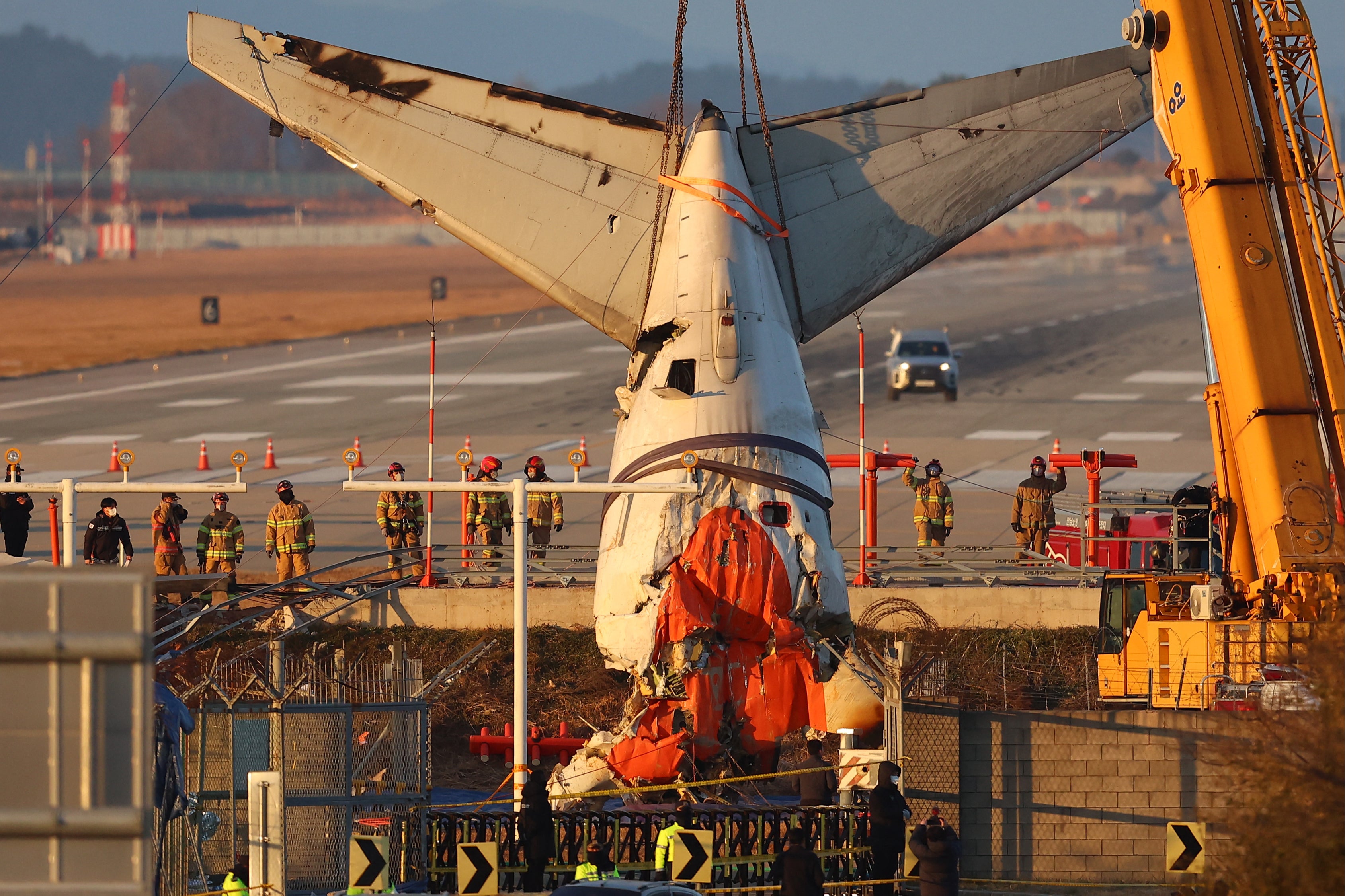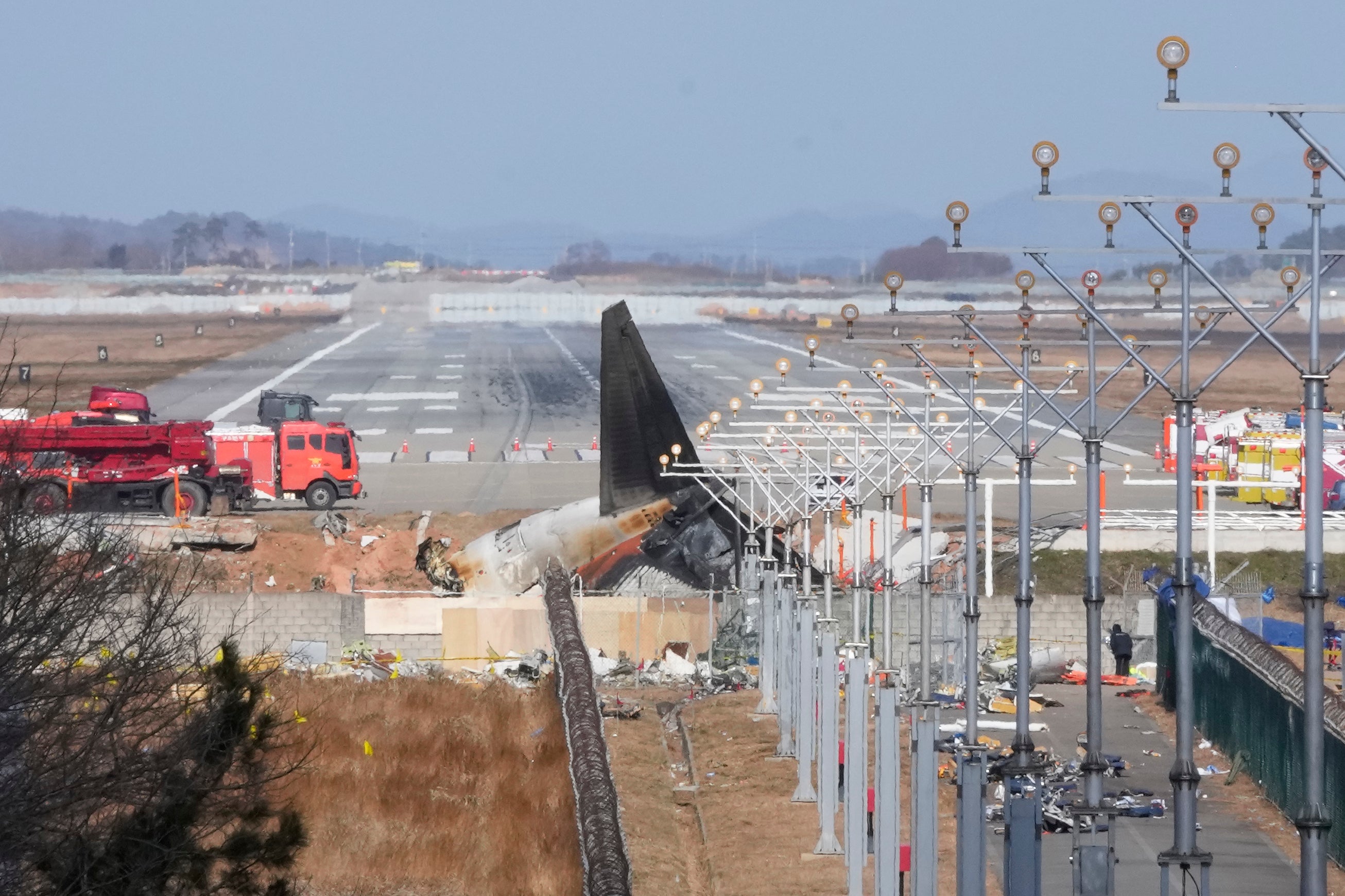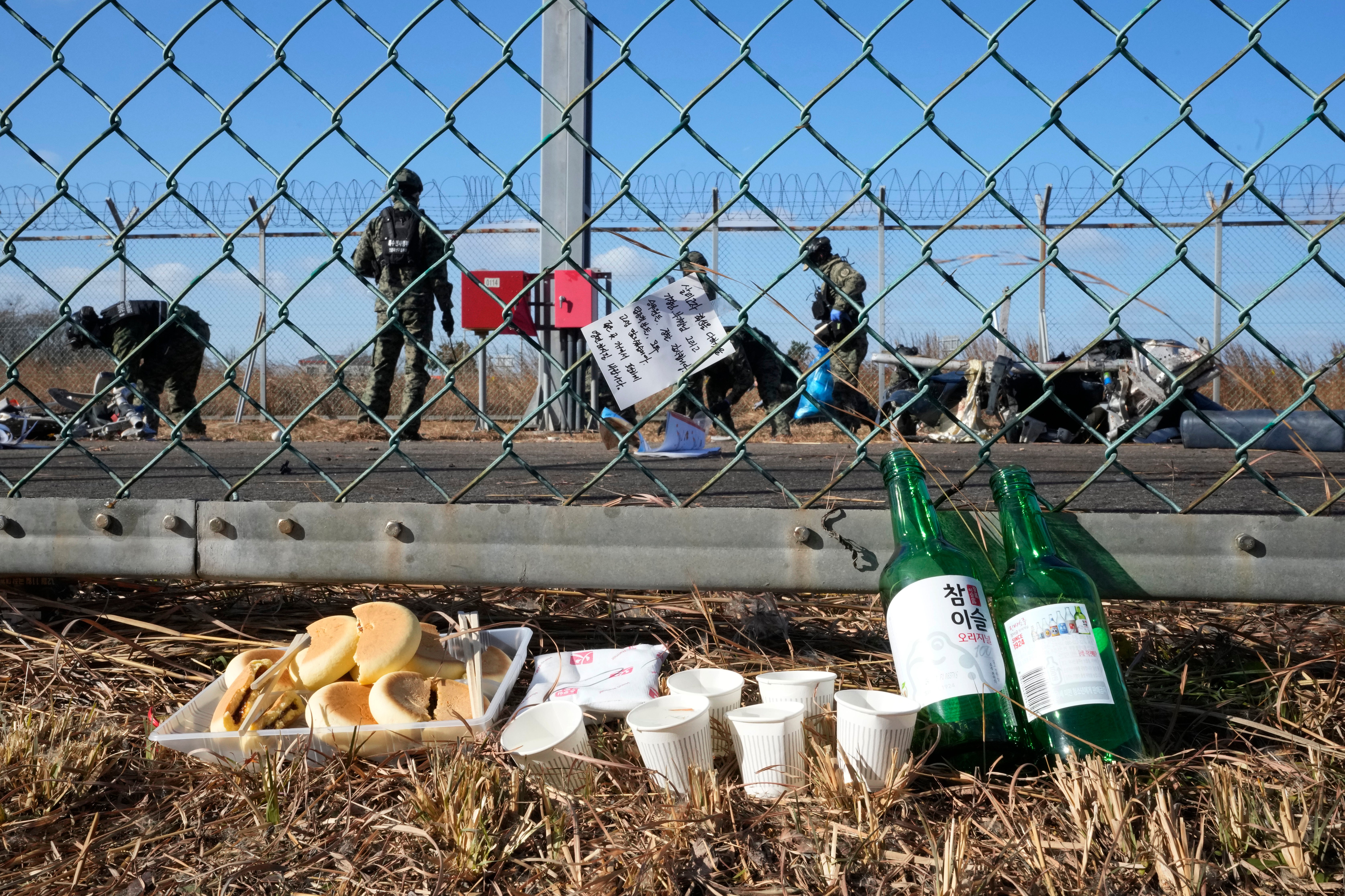South Korea to remove airport concrete walls after deadly Jeju Air crash
The runway design has been criticised as failing to meet safety standards

South Korea will remove concrete embankments from airports after the county’s deadliest domestic air disaster.
The wall installed at Muan International Airport will be removed following December’s Jeju Air crash that killed almost 200 people.
It is reported South Korea will also change the barriers at nine airports in total across the country.
While investigators are still probing what caused Jeju Air flight 7C2216 to crash, including reported bird strikes, experts have said the massive berm that supported navigation antennas at the end of the runway likely made the disaster more deadly than it might have been otherwise.
The December 29 crash killed a total 179 people, with only two crew members seated near the rear of the Boeing 737-800 aircraft surviving.
Video footage showed the passenger jet slamming into the structure and exploding after landing at high speed without gear down and skidding past the end of the runway.

The runway design has also been criticised as failing to meet safety standards, prompting authorities to extend post-runway safety zones that are free of major obstacles.
In some of the first widespread reforms announced since the crash, authorities said they will make new foundations or other adjustments for similar antennas at seven airports including Muan and Jeju International Airport - one of South Korea‘s busiest - that are either below ground level or easy to break.
The decision came after reviewing the structures housing the antennas that guide landings at the airports across the country known as Instrument Landing Systems (ILS), or a “localiser”.
“Muan International Airport plans to completely remove the existing concrete and reinstall the localiser in a fragile structure,” the ministry said in a statement.

The transport ministry said it will ensure a 240-metre (787-ft) long runway safety area at all airports to meet all relevant regulations. The area at Muan airport was about 200 metres long before the crash.
Police said separately that Son Chang-wan, the former president of the state-run Korea Airports Corporation who was in office when the structure at Muan airport was renovated, was found dead in his home on Tuesday of an apparent suicide.
Son was not under investigation over the plane crash and had not been summoned for questioning over it, a police official said.
A shutdown of Muan airport has been extended until April 18, the transport ministry said on Saturday.
Join our commenting forum
Join thought-provoking conversations, follow other Independent readers and see their replies
Comments
Bookmark popover
Removed from bookmarks